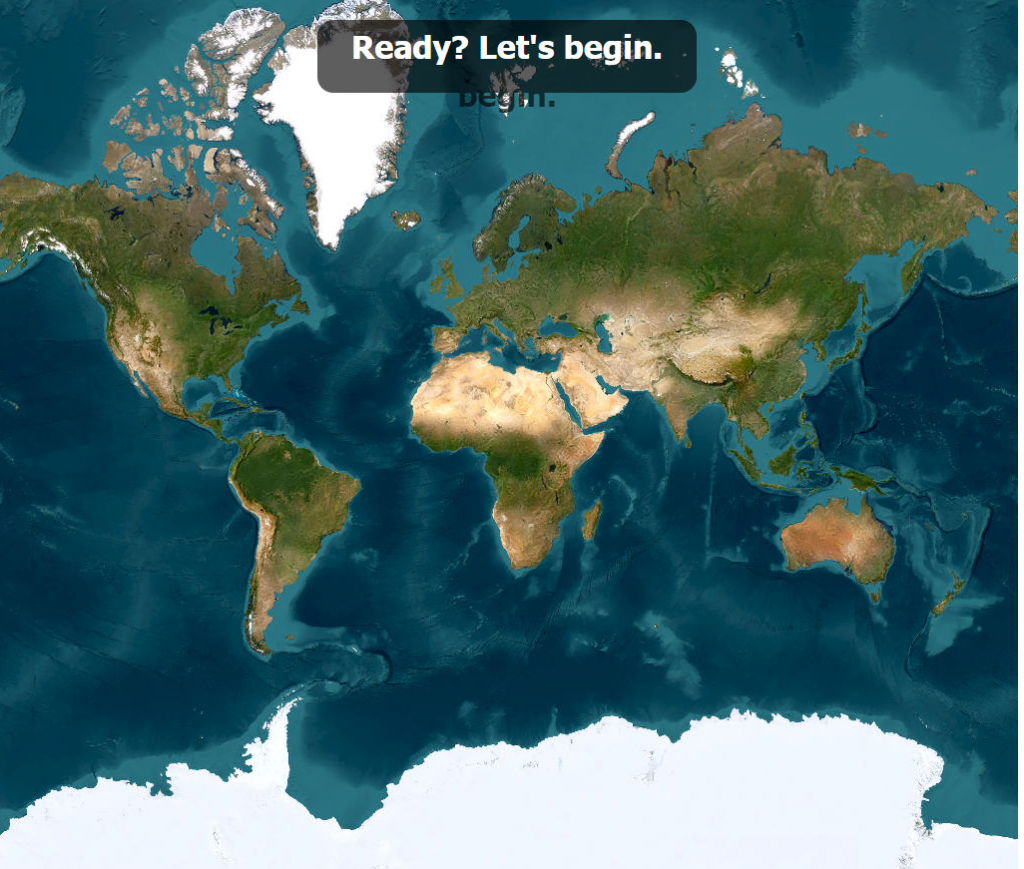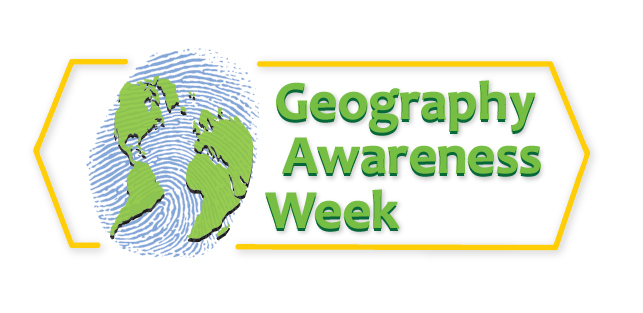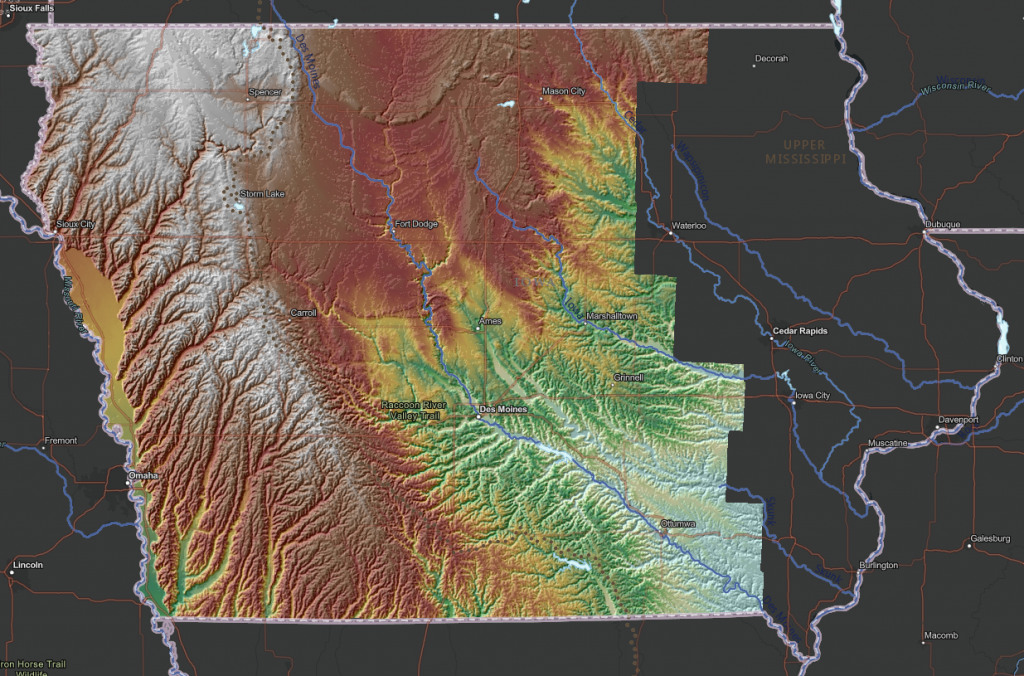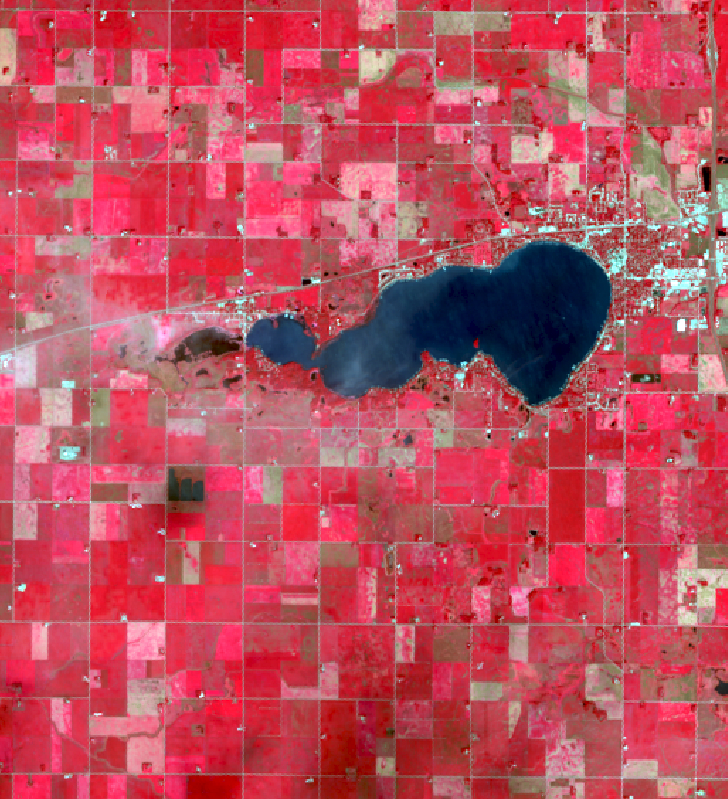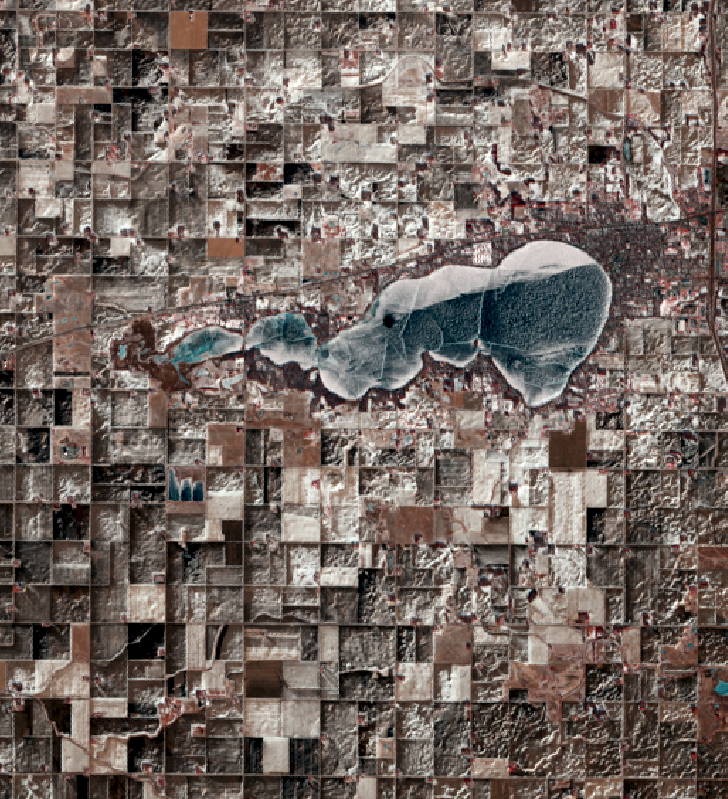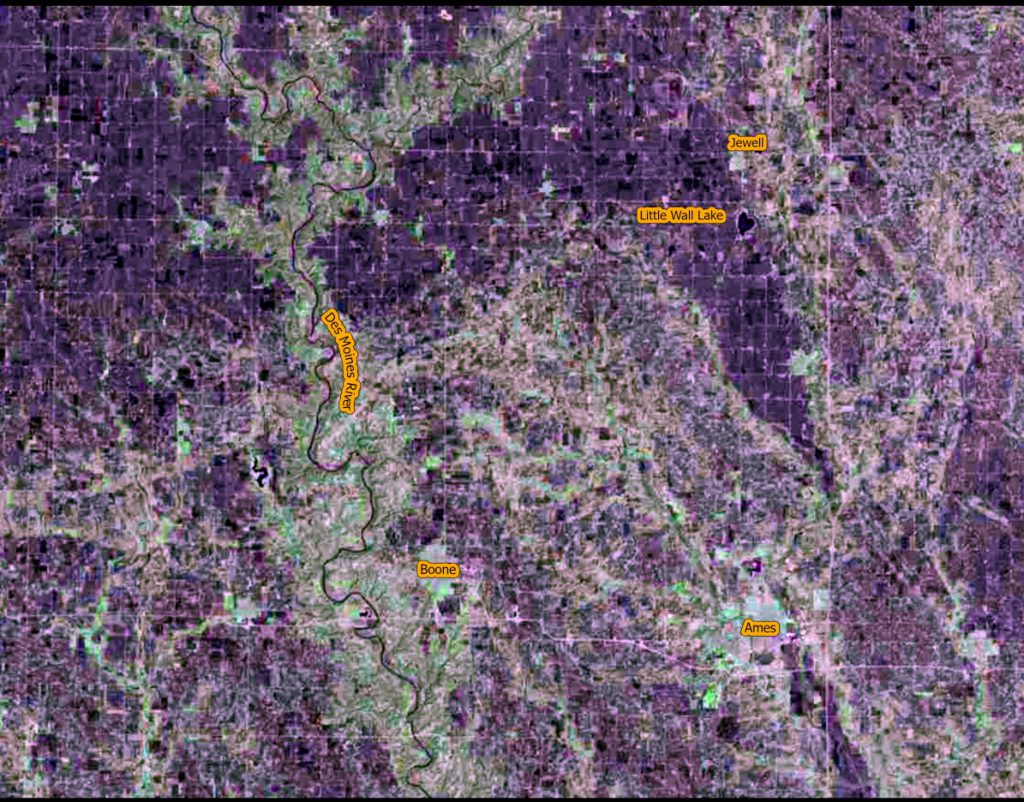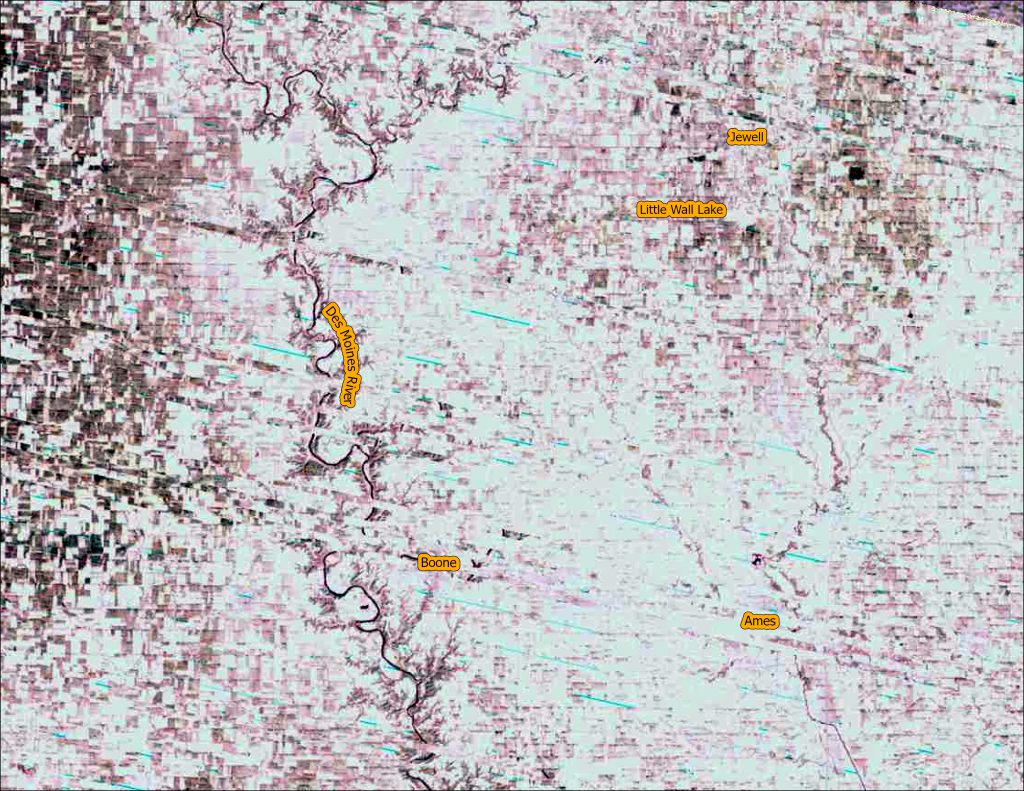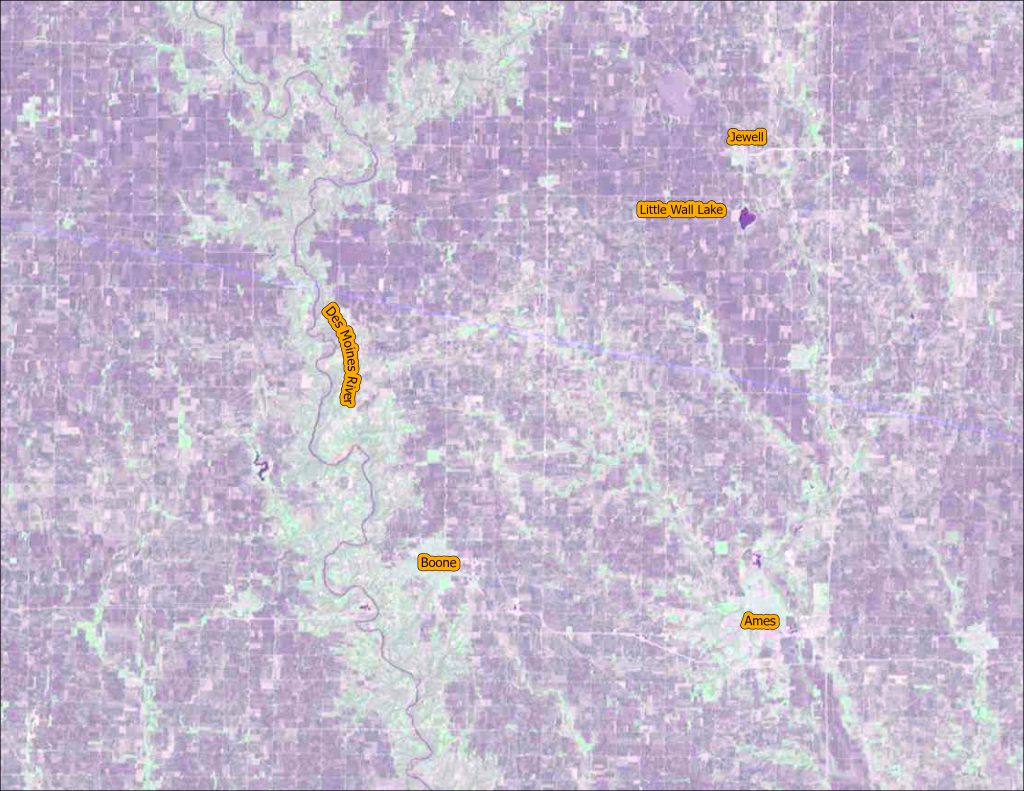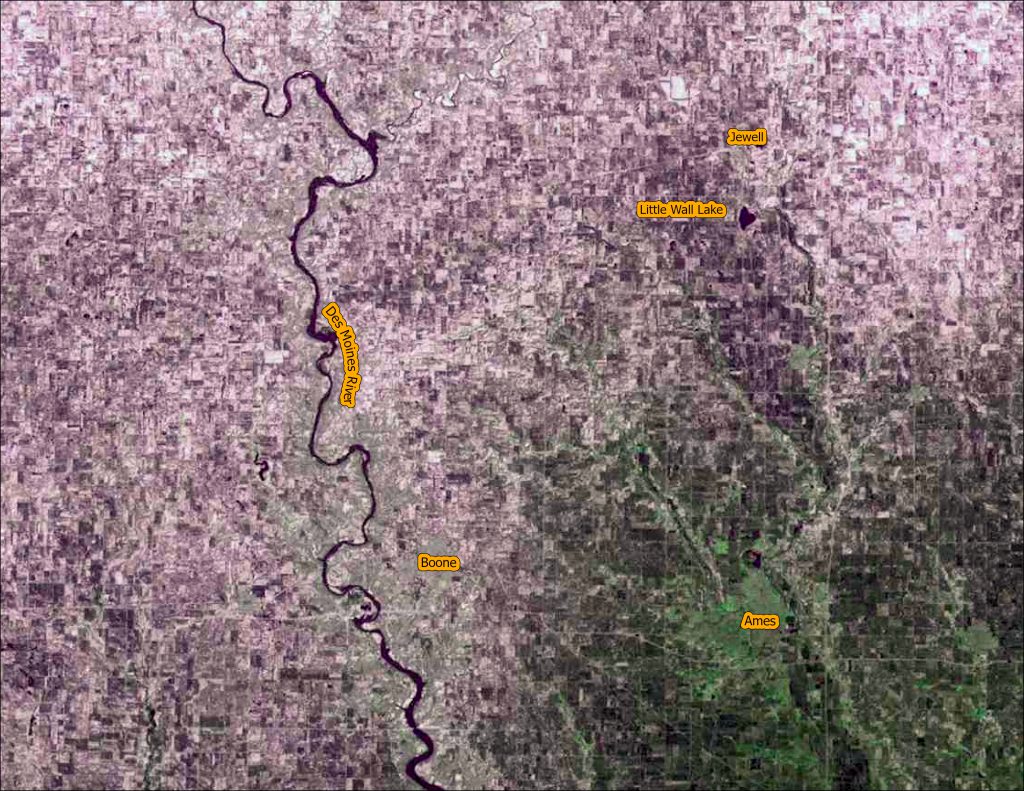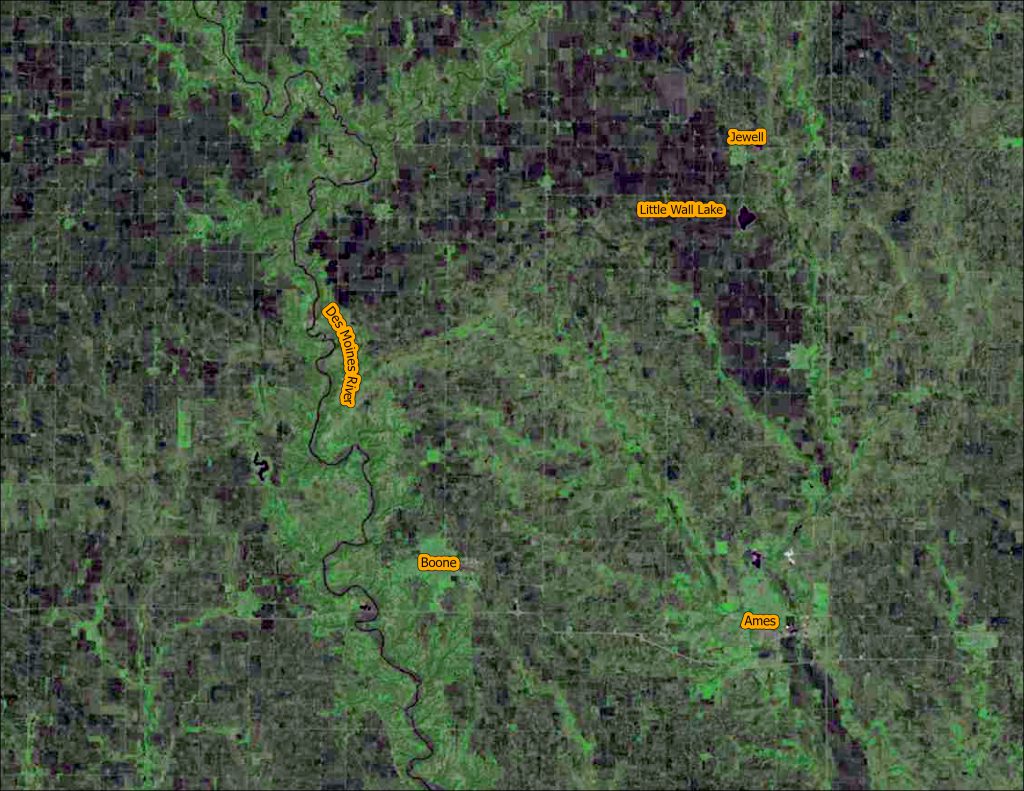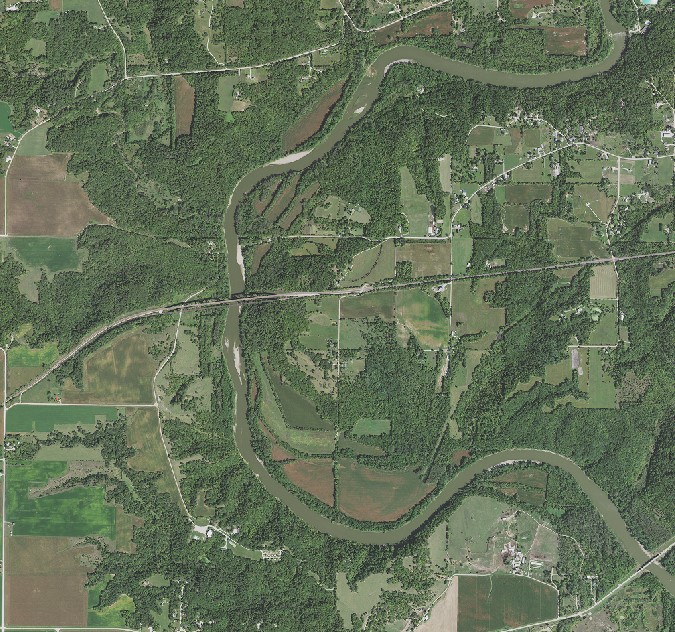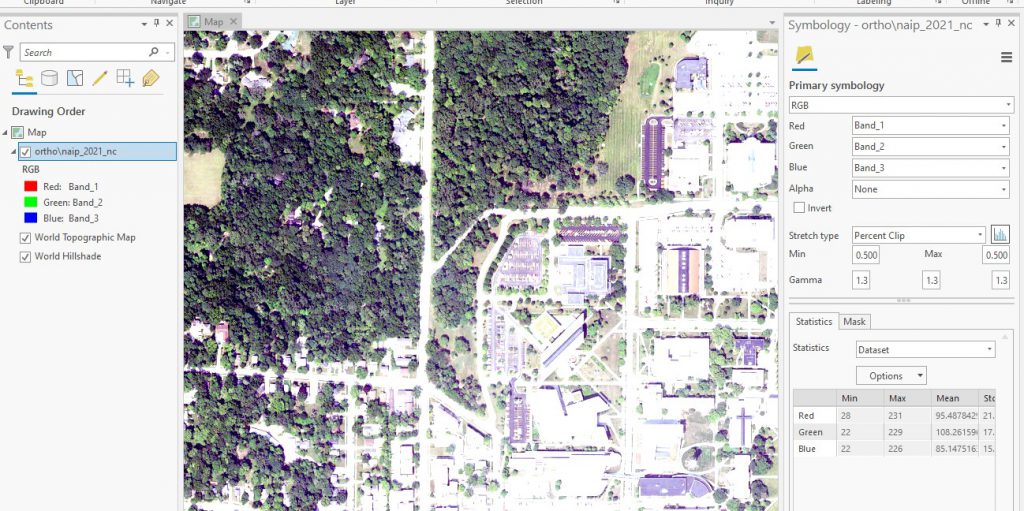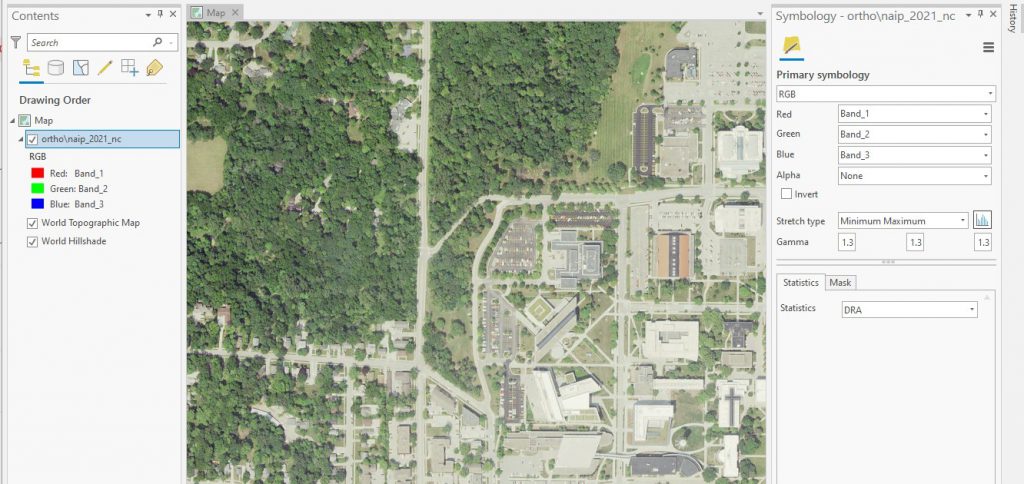A New Iowa as Art Piece – Cautionary Waters
Earlier this year, IowaView Staff member, Amy Logan, created a new piece of art for IowaView’s Iowa as Art Collection. The piece is called Cautionary Waters. It is based off an IowaView blog post, Change Over Time – Flooding on the Landscape (NW Iowa), a series of IowaShots images that were released in 2022. This piece revisits those images and includes new Landsat images from the 2023 drought and 2024 flood.
Cautionary Waters: Visons of the Past, Planning for the Future
How are we planning for the future in our communities? Cautionary Waters is a piece of artwork that asks us to think about this question.

The piece includes four Landsat satellite images of the same area of Northwest Iowa taken in 1990 (a normal year, upper left), 1993 (a year of memorable flooding in the Midwest, upper right), 2023 (a year of drought, lower left), and 2024 (another year of memorable flooding, lower right). White areas in these images are water. These two flood events were roughly 30 years apart.
The piece asks viewers to reflect: when we are planning, do we consider only typical conditions, or does our planning account for extremes, flood or drought as well? Are we willing to allow development in the floodplain and take the loss when the flood comes, or perhaps make a harder choice to not develop there and lose out in the short-term? Also, in cases when we choose to develop in lower elevation areas, what kinds of zoning and development are we allowing in these areas?
The piece is currently on display as part of the “Do Justice” art exhibit at Harvest Vineyard Church, in Ames, Iowa, which runs through the end of January 2025. After that the piece is available for loan on a first come, first serve basis. If interested in displaying the piece or other Iowa as Art pieces, please contact, Amy Logan, IowaView State Coordinator for additional details.


